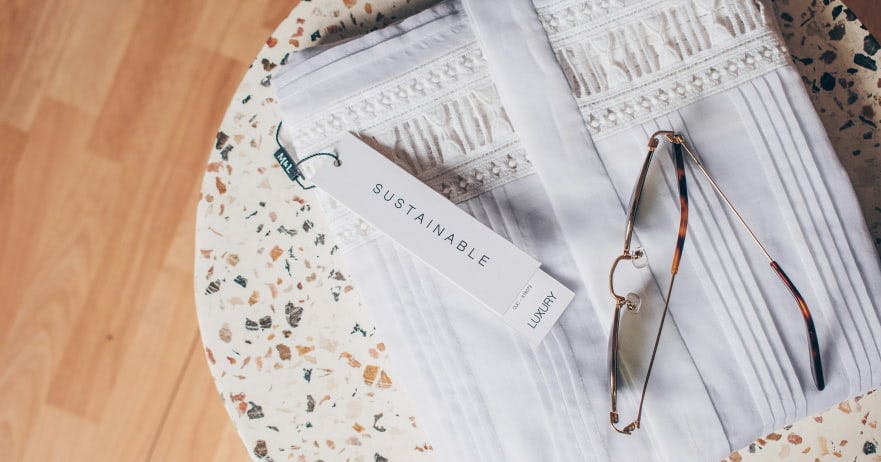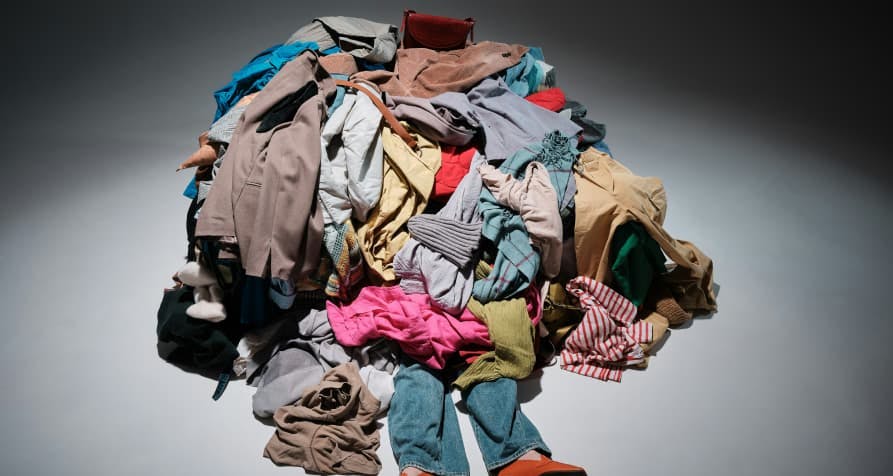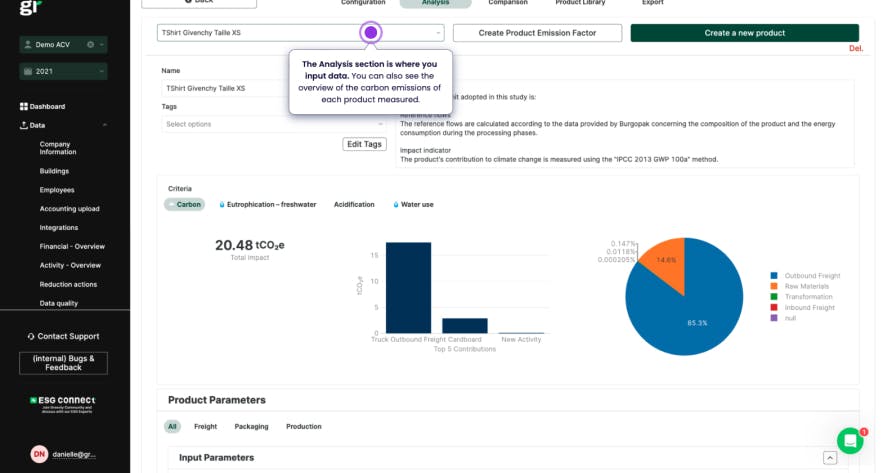ESG / CSR
Industries
Can Ethical Fashion Truly Exist?



In 2024, sustainable fashion has become all of the rage – with Gen Z straying away from fast fashion stores such as H&M or Forever 21 in place of thrift shopping: but can ethical fashion truly exist?
There are several challenges to the transition of ethical fashion, such as excess consumerism and growing social media use for influencers to promote potentially harmful products – making a world where ethical fashion is the singular choice a true challenge.
In this article, we’ll explain what ethical fashion is, the challenges of implementing ethical fashion, and how we can work towards ethical fashion.
What is ethical fashion?
Ethical fashion refers to clothing, accessories, and other fashion garments that are produced in a sustainable and socially responsible manner.
💡Oftentimes, ethical fashion utilises fair trade practices, ethical sourcing, and manufacturing mechanisms to avoid excess emissions – as the fashion industry already accounts for 8-10% of global carbon emissions.
Main components of ethical fashion
Here are some other key features of ethical fashion:
- Sustainable Materials – Ethical fashion brands will utilise eco-friendly materials such as bamboo, cotton, hemp, or recycled fibers to avoid further plastic pollution or landfill emissions.
- Eco Labeling – Ethical fashion brands will seek transparency on their labels to ensure that customers are aware of the process and materials used to make the item.
- Reduce Water Usage – Currently, fashion is responsible for 20% of global clean water pollution – as textiles use heavy amounts of water to be dyed prior to finalising the garment. Therefore, ethical fashion companies will make an effort to reduce water usage during production.
- Fair Labor Practices – Ethical fashion brands value social responsibility, EHS, and other health and safety protocols to the same rigor as environmental issues – meaning that ethical fashion brands will work to ensure safe working conditions and fair wages.
- Minimising Waste – Ethical fashion companies, such as Patagonia, will make an effort to both upcycle and recycle their clothes.
- Animal Cruelty – Refraining from the use of materials derived from animals, such as furs or animal skins – is an imperative component of ethical fashion. As a result, many ethical fashion brands may be inherently vegan.
- Fostering Community – As ethical fashion is meant to bring people who care about both sustainability and style together, a major facet of ethical fashion is to create a safe space and a community for people who are passionate about these two fields.
👉 As a whole ethical fashion is an honest attempt to decarbonise the current impact created by the fashion industry – allowing for innovative ideas and reduced waste from old clothing items.

Why is ethical fashion important?
Ethical fashion is important as it serves as a direct response to mitigate the current environmental impact of fast fashion.
💡 A whopping 92 million tonnes of fast fashion garments find their way to the landfill every year, with this number only increasing as post-pandemic behaviors encourage more single-use clothing purchases – such as by creating DIY single-use outfits for concerts with Taylor Swift’s Eras tour.


Importance of ethical fashion
Here are a few reasons why ethical fashion is important:
Boosts Conscious Consumerism
Ethical fashion can inspire customers to better understand the impact of their purchases, which in turn – could encourage consumers to make more sustainable purchases in other industries such as electronics and home appliances.
Furthermore, as the demand for ethical fashion increases – the desire for people to purchase fast fashion will decrease. This could effectively reduce the amount of harmful chemicals and high amounts of water usage used to produce fast fashion garments.
Reduce Waste
As millions of textile waste is generated each year, it’s imperative to emphasise the importance of slow fashion and durable clothing.
💡 Currently, the fashion industry uses 79 billion cubic meters of water every year – making ethical fashion the perfect remedy to counteract this excessive water usage.
UNGC Sustainable Development Goals
Businesses that align themselves with the goals associated with ethical fashion will also work towards the United Nations’ Sustainable Development Goals, as these goals will help to encourage both economic growth and ethical development & consumption.
Encourage Transparency
One of the most imperative components to developing good CSR and a sustainable company is to remain transparent on all aspects of your business, as this can help to avoid greenwashing and legal fines due to lack of compliance.
The values built into ethical fashion can help your business to practice transparency.
👉 As a whole, ethical fashion works to address the dire social, environmental, and even economic challenges presented via the fast fashion industry – as ethical fashion can help to create a more well-rounded, sustainable business model while also avoiding excess pollution and waste.

What are some examples of ethical fashion brands and practices?
Any effort to reduce water usage, excess emissions, or false eco-labeling can be considered as an approach to ethical fashion.
Here are some well-known examples of ethical fashion brands:
- Patagonia – This clothing brand stresses the importance of only buying what you need, while also offering customers free repairs for any piece of Patagonia clothing.
- Everlane – Focused on reducing natural resource consumption, Everlane is an ethical fashion brand as it works to reduce waste, pollution, and harmful chemicals when producing clothes.
- People Tree – Recognised by Fair Trade for their production of ethically sourced cotton, People Tree prioritises the use of sustainable materials and ethical sourcing.
Here are some examples of ethical fashion shopping practices:
- Thrift Shopping – Popular amongst younger generations, thrifting is a great way to shop for new, unique pieces of clothing – where customers can feel good about their purchase knowing that they avoided someone from throwing away a perfectly good garment.
- Donating or Selling Clothes – It’s okay to revamp your wardrobe every once in a while, but don’t toss your old clothes in the bin – there’s always a thrift store or second-hand online store (Vinted, Poshmark, etc.) that will be interested in taking your old clothes off your hands.
- Investing in Quality Pieces – Contrary to American culture, Europeans have a tendency to purchase fewer pieces of clothing, but of higher quality – an ethical fashion practice that could bode well for countries subject to excessive consumerism such as the United States.
👉 Although ethical fashion seems simple enough to employ, the truth is that implementing ethical fashion worldwide could prove next to impossible – especially in the midst of digital media and the growth of easy access to online shopping.

Why is ethical fashion a challenge?
Although the interest in ethical fashion continues to grow, first-world countries which focus on capitalism and consumerism will deeply struggle to fully transition to ethical fashion – as many big name shoe, clothing, and accessory stores do not qualify as ethical fashion and may never venture into the world of sustainable fashion.
💡 In the same vein of net-zero emissions, ethical fashion should be viewed as an ideal to work towards – as no ethical fashion company will be able to completely avoid carbon emissions in the same way any other business cannot be completely carbon neutral.
Why may ethical fashion not truly exist?
Here are just a few of the challenges associated with fully implementing ethical fashion:
- Consumerism Culture – Countries such as the United States, United Kingdom, and even France have adopted cultures which value promotional sales and enticing consumers to purchase more than necessary – which is best illustrated with shopping traditions such as Black Friday, where retailers offer extremely low-prices to encourage shoppers to buy things they don’t necessarily need.
- More Expensive for Retailers & Required Government Aid – Realistically, transitioning to become a more ethical fashion company will induce higher costs compared to fast fashion business models – as more money will be required to secure sustainable materials and pay employees fairly. Therefore, a global transition to the use of ethical fashion may require government aid – and the highest emitting countries, such as the U.S., may be hesitant to fund the transition to ethical fashion.
- Potential Greenwashing & No Standardisation – If every fashion company in the world decided to transition to the ideals of ethical fashion, it would be challenging to verify each ethical claim – as ethical fashion still lacks standardisation in certifications.
- Global Fascination with Large Fashion Brands – Europeans often opt for quality over quantity, but American retailers remain too tempting to foreigners – meaning that as long as these big names American fashion companies continue exist, it will prove difficult for ethical fashion brands to counteract the impact of fast fashion.
- Pricing & Distribution – While ethical fashion is better for the planet, it won’t be as easy to produce in mass quantities like fast fashion – resulting in limited accessibility for consumers due to both availability and dynamic pricing. This could make it challenging for ethical fashion to sustain the fashion industry as a whole financially.
- Resource Consumption & Persistent Emissions – In a perfect world where every clothing company abides by every single ethical fashion value, the fashion industry will still produce 2.1 billion tonnes of GHG emissions by the year 2030 – accounting for 4% of global emissions. This reveals that even the most sustainable fashion practices could create a profound impact on the planet and climate change.
- Lack of Control Over Disposal of Products – Even if someone purchases a piece of ethical fashion, there is no jurisdiction over what someone does with the piece of clothing after they buy it or how it is disposed of – making it near impossible to ensure ethical fashion remains “ethical” throughout its entire lifecycle.
The table below will discuss further why ethical fashion may not truly exist:
| Reason | Description |
|---|---|
| Supply Chain Complexity | Fashion supply chains are often vast and opaque, making it difficult to ensure every step adheres to ethical standards. Subcontractors may not follow the same principles as the primary brand. |
| Greenwashing Practices | Some brands use misleading marketing to exaggerate their sustainability or ethical claims, leading consumers to believe their practices are better than they are. |
| Resource Limitations | Producing ethical materials, like organic cotton, still consumes significant resources – such as water, and can still have an environmental impact depending on farming practices. |
| Economic Challenges | Paying fair wages and implementing sustainable practices increases production costs, which can make ethical fashion inaccessible to many consumers and limit widespread adoption. |
| Dependence on Fossil Fuels | Although there is an effort to use sustainable materials, even ethical brands rely on transportation to deliver clothes in addition to using synthetic materials derived from fossil fuels – both of which contribute to environmental harm. |
| Overproduction | Ethical brands may produce excess inventory to meet consumer demand, leading to waste and undermining sustainability goals. |
| Lack of Standardisation | There is no universal certification for ethical fashion, which leads to inconsistency and consumer confusion whether a brand is truly considered as "ethical fashion". |
| Consumer Habits | Fast fashion culture encourages overconsumption, making it challenging for ethical fashion to compete without addressing fundamental shifts in consumer behavior – as the only way to ensure the same amount of profits is to employ dynamic pricing. |
👉 Ultimately, while ethical fashion may not be able to truly exist as the production of sustainable clothing will always use finite resources and energy to a certain extent – there is still an opportunity to lessen the impact created by the fashion industry and encourage ethical fashion practices to both businesses and consumers.

How could the fashion industry successfully market ethical fashion?
Although fully ethical fashion companies or a transition to ethical fashion as a whole may be out of reach, it’s still worthwhile to work towards implementing ethical fashion practices.
💡 Reducing emissions as a result of the fashion industry from its current 8 to 10% to 4% is still substantial, still worth the effort to employ ethical fashion even if no clothing company will ever be entirely emission-free.
Here are some ways in which the fashion industry could successfully promote the importance and potential for ethical fashion:
- Fashion Week – Advertising new and exciting ethical fashion pieces at New York, Paris, or Milan Fashion Week could entice luxury brands to stock up on these pieces and encourage even high-end buyers to go sustainable.
- Celebrity Endorsements – Shawn Mendes’s sustainable line of clothing developed in collaboration with Tommy Hilfiger can help inspire fans to shop ethical fashion, in addition to popstars like Taylor Swift if they were to choose ethical fashion for their concert tour outfits. This would help promote that more ethical fashion could be just as trendy or utile as traditional clothing.
- Auctions for Sustainable Clothes – After a high-end fashion event, such as the New York Met Gala, celebrities who wore sustainable pieces could choose to auction them off – donating the proceeds to propel the transition to ethical fashion while also promoting how ethical fashion is possible in the industry.
- Customer Incentives – Sustainable clothing stores should strive to offer new customers a return discount to encourage them to purchase ethical fashion over fast fashion.
- Develop Inclusive Pricing – Oftentimes, the major roadblock between those who can afford fast fashion and ethical fashion is the price tag – meaning it’s important for ethical fashion brands to seek both affordable and sustainable materials to make ethical fashion accessible to all.
However, it is still important to take steps, no matter how small, towards becoming a more sustainable company – which is something we can help you with at Greenly
What About Greenly?
If reading this article on ethical fashion and if it can truly exist has made you interested in reducing your carbon emissions to further fight against climate change – Greenly can help you!
It can be overwhelming to figure out how to effectively reduce your environmental impact, but don’t worry – Greenly is here to help. Click here to schedule a demo to see how Greenly can help you find ways to ensure your company is complying with all current and future environmental regulations.
Greenly can help you make an environmental change for the better, starting with a carbon footprint assessment to know how much carbon emissions your company produces.




